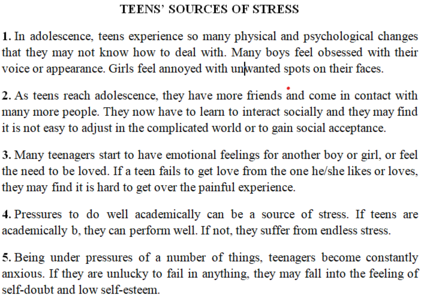Câu 7: Reading Passage has 4 paragraphs, A-D. Choose the correct heading for each paragraphs from the list of headings below. ( 1.0pt)
The water crisis
A. Agriculture consumes about 70% of the world's fresh water, so improvements in irrigation can make the greatest impact. At present, average efficiency in the use of irrigated water in agriculture may be as low as 50%. Simple changes could improve the rate substantially, though it is unrealistic to expect very high levels of water-use efficiency in many developing countries, faced as they are with a chronic lack of capital and a largely untrained rural workforce. After agriculture, industry is the second biggest user of water and, in terms of value added per liter used, is sixty times more productive than agriculture. However, some industrial processes use vast amounts of water. For example, production of 1 kg of aluminium might require 1,500 liters of water. Paper production too is often very water-intensive. Though new processes have greatly reduced consumption, there is still plenty of room for big savings in industrial uses of water.
B. In rich countries, water consumption has gradually been slowed down by price increases and the use of modern technology and recycling. In the USA, industrial production has risen fourfold since 1950, while water consumption has fallen by more than a third. Japan and Germany have similarly improved their use of water in manufacturing processes. Japanese industry, for example, now recycles more than 75% of process water. However, industrial water consumption is continuing to increase sharply in developing countries. With domestic and agricultural demands also increasing, the capacity of water supply systems is under growing strain.
C. One way to cut back on water consumption is simply to prevent leaks. It is estimated that in some of the biggest cities of the Third World, more than half of the water entering the system is lost through leaks in pipes, dripping taps and broken installations. Even in the UK, losses were estimated at 25% in the early 1990s because of the failure to maintain the antiquated water supply infrastructure. In addition, huge quantities of water are consumed because used water from sewage pipes, storm drains and factories is merely flushed away and discharged into rivers or the sea. The modern approach, however, is to see used water as a resource which can be put to good use - either in irrigation or, after careful treatment, as recycled domestic water. Israel, for instance, has spent heavily on used water treatment. Soon, treated, recycled water will account for most farm irrigation there. There are other examples in cities such as St Petersburg, Florida, where all municipal water is recycled back into domestic systems.
D. Another way of conserving water resources involves better management of the environment generally. Interference with the ecosystem can have a severe effect on both local rainfall patterns and water run-off. Forest clearings associated with India's Kabini dam project reduced local rainfall by 25%, a phenomenon observed in various other parts of the world where large-scale deforestation has taken place. Grass and other vegetation acts as a sponge which absorbs rainfall both in the plants and in the ground. Removal of the vegetation means that rainfall runs off the top of the land, accelerating erosion instead of being gradually fed into the soil to renew ground water.
List of Headings
1. What the future holds
2. Successful measures taken by some
3. The thirsty sectors
4. Ways of reducing waste
5. Interdependence of natural resources
Your answers:
1. Paragraph A ............................................
2. Paragraph B ............................................
3. Paragraph C ............................................
4. Paragraph D ............................................

